The Dummies Guide to Starting a Business in 2025: Step-by-Step for Beginners
Learn how to start a business in 2025 with this dummies guide. Simple, step-by-step tips for beginners, from idea to launch, using real tools and trends.
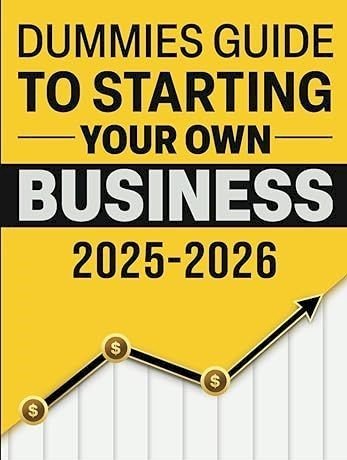
Did you know that over 5.5 million new business applications were filed in the U.S. in 2024 alone? According to the U.S. Census Bureau, more people than ever are choosing to be their own boss—and 2025 is shaping up to break that record.
Yet, for many first-time entrepreneurs, the idea of starting a business still feels overwhelming. Where do you begin? What if you don’t have a business degree or a big budget? What if you fail?
Here’s the good news: starting a business in 2025 has never been more accessible. Thanks to powerful free tools, remote work trends, AI automation, and online learning, you can launch a business with less than £500—and in many cases, even less.
Whether you’re dreaming of launching an online shop, offering freelance services, or turning your hobby into profit, this complete guide will walk you through each step—clearly, simply, and confidently.
From choosing the right idea to getting licenses, setting up your website, and using the latest AI tools, this beginner’s guide to starting a business in 2025 will show you how to build something real—even if you’re starting from zero.
Why Starting a Business in 2025 Makes More Sense Than Ever

Image source: www.puregreenfranchise.com
If you've been thinking about starting a business, 2025 offers one of the best environments in recent years to take that leap. Here’s why this year stands out for new entrepreneurs:
- Remote work and flexible side hustles are now the norm. Thanks to widespread digital adoption, more people are balancing part-time businesses with full-time jobs—without needing an office or large team.
- Startup costs are lower due to accessible tech. Tools powered by artificial intelligence, automation, and no-code platforms (like Canva, ChatGPT, and Shopify) help new business owners build websites, design content, and manage finances—often with free or low-cost plans.
- Consumers are shifting toward small and ethical brands. People are making more intentional purchases in 2025, preferring businesses that are local, sustainable, or offer a personal touch—giving independent startups a real edge over big corporations.
- Service-based industries and digital commerce are expanding. According to the U.S. Bureau of Economic Analysis (BEA), service-sector growth and online sales continue to rise in 2025, especially in areas like education, personal care, and freelance services.
Bottom line: With the right tools, minimal capital, and a thoughtful plan, 2025 gives you a strong head start. It's never been easier to test a business idea from home, grow your brand online, and reach your audience directly.
Best Business Ideas for Beginners in 2025

Image source: i.pinimg.com
Looking to start a business with minimal investment in 2025? Thanks to affordable tech tools, remote work culture, and consumer trends, many small-scale business models are thriving. Below are some of the most accessible and in-demand ideas this year:
|
Business Idea |
Estimated Startup Cost |
Why It Works in 2025 |
|
Online Tutoring / Coaching |
$0 – $250 |
Increased demand for online learning in subjects like coding, maths, languages, and test prep. Ideal for educators or subject experts. |
|
Selling Digital Products |
$50 – $300 |
Create and sell eBooks, printable planners, templates, or online courses. No inventory or shipping needed. |
|
Cleaning or Organizing Services |
$150 – $500 |
Recurring local demand from homeowners and small offices. Minimal tools and fast setup make it beginner-friendly. |
|
Subscription Box Business |
$300 – $1,000 |
Personalised boxes (e.g., self-care, snacks, pet toys) are popular among niche communities. Great for creative entrepreneurs. |
|
Freelance Writing / Virtual Assistant |
$0 – $150 |
High demand from startups, influencers, and eCommerce brands for admin tasks, emails, blog posts, and customer service. |
Tip: Choose a business idea that fits your strengths and interests. Starting small and validating your idea can reduce risk and build confidence.
Source: U.S. Small Business Administration & SCORE Small Business Trends Report, 2025
Read More: If you're considering launching an online fashion store or building a brand in the U.S. apparel space, it’s helpful to learn from successful examples. One rising name in 2025 is Stateside—a clothing brand known for its quality, comfort, and American-made focus. To understand what makes it stand out and how you can apply similar principles to your own venture, check out our in-depth article: Stateside Clothing Brand Guide 2025: What Makes It a Top U.S. Fashion Choice?.
How to Choose the Perfect Business Name (2025 Guide)

Image source: i.pinimg.com
Your business name is often the first impression you make—both online and offline. A strong, memorable name builds trust, attracts attention, and makes marketing easier.
Key Qualities of a Great Business Name:
- Simple to Spell and Pronounce
Avoid complex words, unusual spellings, or tongue twisters. Clarity wins every time. - Clear and Relevant
Choose a name that hints at what your business does or the value it offers (e.g. “EcoBrew” for a sustainable coffee brand). - Legally Available
Before falling in love with a name, check that it’s not already trademarked or registered: - Use the USPTO Trademark Search
- Search your state’s business name database via the Secretary of State website
- Domain Name Available
A matching website domain boosts your online visibility. Check tools like: - Namechk.com – To see domain + social availability
- GoDaddy.com – For domain pricing and purchase
- Future-Proof and Scalable
Avoid limiting words like a specific year (“Tech2023”) or location (“Brooklyn Cakes”) unless you plan to stay local long-term.
Pro Tip:
Check social media handle availability on platforms like Instagram, Facebook, TikTok, and LinkedIn to maintain brand consistency across all channels. Use tools like KnowEm or Namechk for an all-in-one scan.
A well-chosen business name doesn’t just sound good—it helps build your brand from day one. Before finalising your name, it's essential to make sure it’s legally available and not already in use by another business in your state. If you're based in Washington D.C. or want to check local business registrations, use this Washington DC SOS Business Search: Step-by-Step Guide to Finding Registered Businesses in 2025 to confirm availability and avoid legal issues down the line.
16 Essential Steps to Start a Business in 2025
Step 1: Pick the Right Business Idea for You
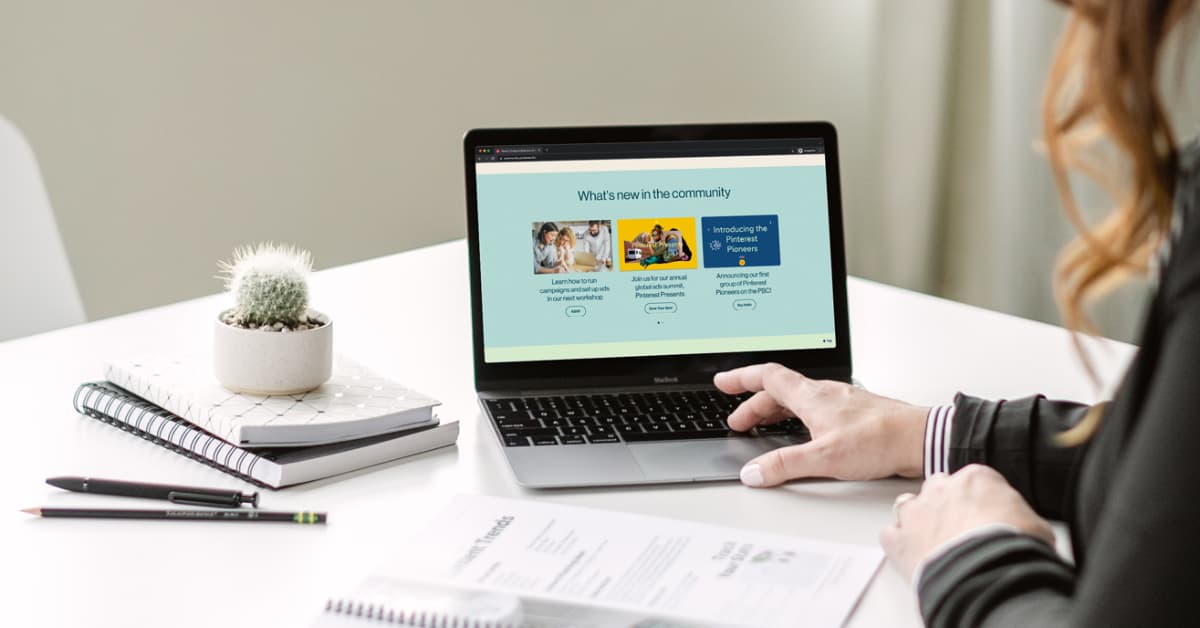
Image source: www.simplepinmedia.com
The best business ideas often come from your own skills, hobbies, or everyday experiences. Start by making a list of:
- Things you’re good at
- Activities you enjoy
- Problems people often ask you to solve
Next, make sure your idea solves a real need. You can do this by:
- Searching for similar services or products online
- Reading reviews to find gaps or complaints
- Asking potential customers for feedback through surveys or social media polls
- Checking demand using tools like Google Trends or AnswerThePublic
Tip: Your idea doesn’t have to be completely original—it just needs to be useful and have a clear benefit. Even a small improvement on an existing solution can become a successful business in 2025.
Step 2: Conduct Simple Market Research (the Smart Way)

Image source: i.pinimg.com
Before you spend money or time building your product or service, make sure there’s actual demand. Market research helps you answer one key question:
Do people really want what you’re offering?
Here’s how to validate your business idea with simple, beginner-friendly steps:
Key Questions to Answer:
- Are people searching for this type of solution?
Use tools like Google Trends to check if your topic is gaining interest over time. For example, search terms like “virtual assistant for Etsy sellers” or “eco-friendly soap” can show you search patterns. - Who are your main competitors?
Look for similar businesses on Google, Etsy, Amazon, or Instagram. Check their reviews, products, pricing, and how they market themselves. - What are they charging, and what’s included?
Note down price ranges and compare value. Are there hidden fees? Do they offer bundles or bonuses? - Where’s the opportunity or gap?
Look for what customers complain about in reviews. Are there missing features, slow shipping, bad customer service? This is where you can stand out.
Free Tools to Use:
|
Tool |
Purpose |
|
Google Trends |
See search interest over time |
|
Facebook Groups |
Get real-time feedback and join conversations |
|
Reddit Threads (e.g. r/Entrepreneur, r/SmallBusiness) |
Understand pain points and audience needs |
|
YouTube Comments |
Identify what viewers love/hate about similar products |
|
Amazon & Etsy Reviews |
Analyze real customer feedback for similar items |
Pro Tip: Keep notes or screenshots of your research findings. These will help you improve your product, set the right price, and market better.
Step 3: Draft a One-Page Business Plan (The Smart Beginner Way)

Image source: i.pinimg.com
You don’t need a 30-page document to get started. A one-page business plan gives you just enough structure to stay focused and communicate your idea clearly.
Here’s what to include in your one-pager:
What to Write in Your One-Page Business Plan:
- Business Description
What does your business do, and what problem does it solve? Write it in one or two sentences. - Target Audience
Who will buy your product or service? Describe your ideal customer—age, profession, interests, or needs. - Unique Selling Point (USP)
What makes your business different from others in the market? Think about your strengths or benefits. - Pricing Strategy
How much will you charge, and why? Consider competitor pricing and your own costs. - Marketing Channels
Where and how will you promote your business? Examples: Instagram, local flyers, email newsletters, or SEO. - Revenue Streams
How will you make money? Think beyond just product sales—maybe subscriptions, workshops, or affiliate income. - Short-Term Goals (Next 3–6 Months)
Set realistic goals—like launching your website, getting your first 10 customers, or building a social media following.
Recommended Free Template:
Use the U.S. Small Business Administration’s Lean One-Page Plan to guide your structure. It’s simple, practical, and trusted by thousands of small business owners.
Pro Tip: Keep your plan flexible. You’ll likely revise it as you learn more about your customers and market.
Also read: Looking to add unique flavours to your next product line, cafe menu, or personal taste test? From bold citrus infusions to nostalgic soda revivals, 2025 is seeing a surge in creative and region-inspired beverages across the U.S. If you’re a foodie, mixologist, or entrepreneur exploring trending drink ideas, don’t miss our roundup of the Top 5 Stateside Drink Flavors to Try in 2025—featuring the best U.S. beverage trends everyone’s sipping on this year.
Step 4: Choose the Right Legal Structure for Your Business
Image source: encrypted-tbn0.gstatic.com
Choosing the right legal structure affects your taxes, personal liability, paperwork, and how you can raise money. Here's a simple breakdown of the most common options for beginners:
Sole Proprietorship
- Best for: One-person businesses, freelancers, or hobbyists.
- Pros: Easiest and cheapest to start; minimal paperwork.
- Cons: No personal liability protection — you’re responsible for all business debts and legal issues.
Limited Liability Company (LLC)
- Best for: Solo founders or small teams who want legal protection.
- Pros: Protects your personal assets, offers flexible taxation (can be taxed as a sole prop, partnership, or S-Corp).
- Cons: Slightly more paperwork and fees than a sole proprietorship.
Partnership
- Best for: Two or more people going into business together.
- Pros: Simple to set up; profits pass through to partners' personal tax returns.
- Cons: All partners are personally liable unless you form a Limited Liability Partnership (LLP).
S-Corporation
- Best for: Small businesses planning to scale and pay owners a salary + dividends.
- Pros: Pass-through taxation like an LLC, plus potential tax savings on self-employment taxes.
- Cons: Stricter IRS requirements; limited to 100 shareholders who must be U.S. citizens/residents.
Tip: Most beginners choose either a Sole Proprietorship (for side gigs) or an LLC (for full-time or higher-risk businesses).
Step 5: Register Your Business Name the Right Way
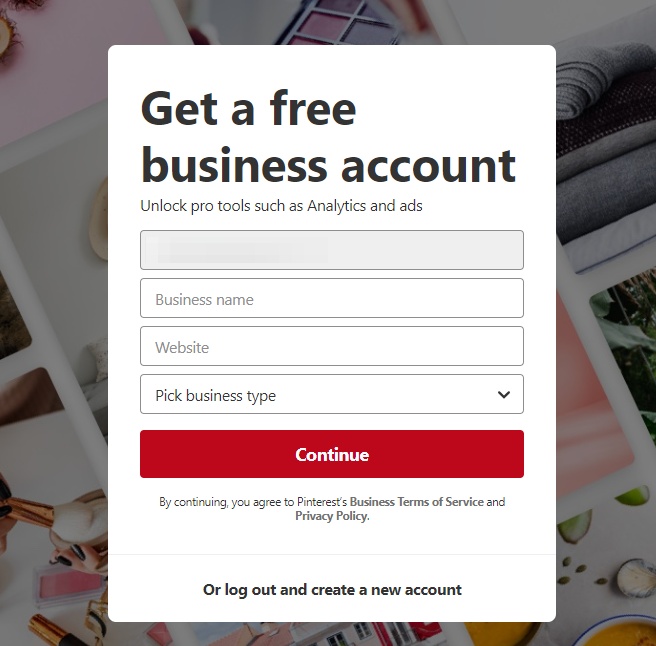
Image source: pro.regiondo.com
Once you’ve chosen a unique and memorable name for your business, the next step is to officially register it with your state government. This process gives you legal rights to operate under that name and adds credibility to your brand.
Here's what to do:
- Check Availability:
Search your state’s business name database to ensure the name isn’t already taken. You can usually do this on your Secretary of State’s website. - Register the Name:
- If you're forming an LLC or corporation, registering the name is part of the formation process.
- If you’re a sole proprietor or partnership, you may need to file a “Doing Business As” (DBA) name, also known as a trade name or fictitious name.
- Secure Online Presence:
- Check domain name availability through registrars like GoDaddy, Namecheap, or Google Domains.
- Grab matching usernames on social platforms (Facebook, Instagram, LinkedIn) to protect your brand identity.
Why registering your name matters:
- Helps you open a business bank account
- Allows you to apply for licenses and permits
- Makes it easier to build a website and brand online
- Prevents others from using a similar name in your state
Tip: Even if your business doesn’t require formal registration, having a registered name builds trust and looks professional.
For detailed steps by U.S. state, visit SBA.gov’s business name registration guide.
You May Find You Interest: If you're planning a trip to South Korea and want a truly relaxing and culturally rich experience, don’t miss out on visiting a jjimjilbang. These traditional Korean bathhouses offer more than just saunas—they include heated rooms, spa treatments, sleeping areas, and even entertainment zones. To help you choose the best spots, check out our guide to the Best Korean Public Bath Houses You Must Visit in South Korea: Top 8 Jjimjilbangs for a list of must-visit places loved by locals and tourists alike.
Step 6: Apply for the Right Licenses and Permits
Image source: encrypted-tbn0.gstatic.com
Before you start selling or offering services, it’s crucial to make sure your business is legally compliant. This means checking and applying for any required licenses and permits at the local, state, and federal levels. Requirements vary based on your location and industry.
Common Licenses and Permits You May Need:
- Home Occupation Permit – Required if you're operating a business from your home (check your city zoning laws).
- Seller’s Permit (or Sales Tax Permit) – Needed if you sell physical products or taxable goods/services. Issued by your state’s Department of Revenue.
- Food Handling or Safety Permit – Required if you're preparing or selling food items (cottage foods, catering, food trucks, etc.).
- Childcare License – If you're providing daycare or babysitting services professionally.
- Professional or Trade Licenses – For industries like construction, cosmetology, massage therapy, or financial advising.
- Federal Licenses – Required for businesses involved in alcohol, firearms, transportation, agriculture, etc.
How to Check What You Need:
- Use the SBA License & Permits Tool
Visit: SBA.gov License Finder - Contact Your Local Government Office
Reach out to your city or county business office—they can guide you based on your zip code and industry. - Check with Your State’s Business Licensing Office
Most states have an online portal to check licensing rules and apply digitally.
Tip: Don’t skip this step. Operating without proper permits can result in fines or forced closure. It's better to get everything in order early on.
Step 7: Open a Business Bank Account
Image source: encrypted-tbn0.gstatic.com
Opening a dedicated business bank account is a crucial step that many beginners overlook—but it can save you a lot of headaches later. Keeping your personal and business finances separate is essential for managing cash flow, tracking expenses, and filing taxes accurately.
Why it's important:
- Simplifies tax preparation by clearly separating business income and expenses
- Builds a business credit profile, which is helpful for future loans or credit lines
- Gives your business more legitimacy, especially when dealing with vendors or clients
Where to open one:
You can choose between traditional banks like Chase, Bank of America, and Wells Fargo, or go with modern, digital-first options like Bluevine, Novo, or Lili—which often have lower fees and easy online setup for small businesses and freelancers.
Common documents you’ll need:
- Employer Identification Number (EIN) – free from the IRS website
- Articles of Organization – if you’re forming an LLC or corporation
- DBA Certificate (Doing Business As) – if your business operates under a different name
- Business license or permit – depending on your local or state requirements
- Operating Agreement – sometimes required by banks for LLCs
Tip: Compare account fees, minimum balances, and integrations with your accounting software (e.g., QuickBooks, Wave) before choosing a bank.
Pro Tip: Opening your business account early—even before making your first sale—sets a strong foundation and keeps your finances clean from the start.
Read Us More For: As your business grows, taking time to recharge and reflect becomes just as important as daily operations. Many entrepreneurs in 2025 are embracing the value of combining travel with networking and personal growth through curated experiences. If you're thinking of taking a break while staying inspired, check out our guide to Luxury Business Retreats: Destinations, Planning & Trends for 2025 to explore how high-end retreats can boost clarity, creativity, and strategic thinking.
Step 8: Understand Small Business Taxes (The Right Way)
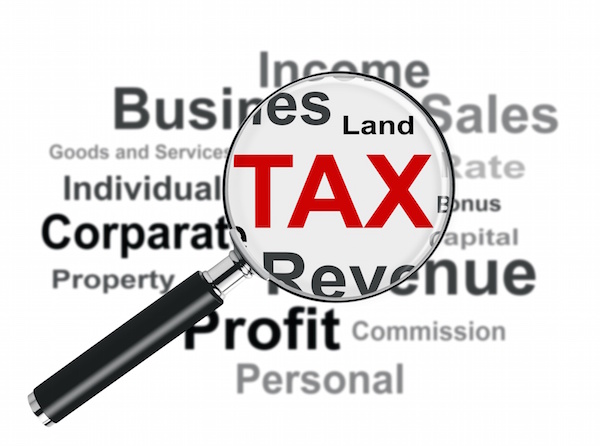
Image source: www.francelawfirm.com
Every small business in the U.S. must deal with taxes—no way around it. But don’t worry—it’s manageable when you understand the basics. Here are the three key types of taxes most small business owners face:
- Income Tax
This is tax on the profit your business earns. Sole proprietors usually report it on their personal tax return using Schedule C (Form 1040). LLCs, partnerships, and corporations may have different filing requirements depending on their structure. - Self-Employment Tax
If you're self-employed, you're responsible for paying both the employer and employee portion of Social Security and Medicare. In 2025, this rate is 15.3% (12.4% for Social Security and 2.9% for Medicare). You’ll file this using Schedule SE. - Sales Tax
If you sell physical goods—or some digital products or services—you may need to collect sales tax from customers. This varies by state and sometimes city or county. Always check your state’s department of revenue to know your obligations.
Additional Tax Tips:
- Estimated Taxes: Many small businesses must pay taxes quarterly instead of waiting for tax season. Missing payments may lead to penalties.
- Tax ID (EIN): You may need an Employer Identification Number (EIN) from the IRS—especially if you hire employees or form an LLC or corporation.
- Track Expenses Early: Use tools like QuickBooks, Wave, or even Google Sheets to track income and business expenses from the start.
Where to Get Help:
- IRS Small Business and Self-Employed Tax Center – Beginner-friendly IRS guidance, forms, and FAQs.
- SCORE Mentors – Free consultations with small business tax professionals.
- Local Accountant – A one-time consultation with a CPA can help you avoid costly mistakes later.
Step 9: Build a Basic Website That Builds Trust
Image source: lh3.googleusercontent.com
Having a professional-looking website is essential—even for small or home-based businesses. In 2025, setting one up is easier and cheaper than ever.
Best Beginner-Friendly Website Builders:
- Wix – Drag-and-drop editor, great for service-based businesses
- Squarespace – Beautiful templates, ideal for creative portfolios or product shops
- WordPress + Elementor – Highly flexible, better for long-term scalability
Most platforms offer free trials or starter plans under $20/month. No coding is required.
Must-Have Pages for Your Small Business Website:
- Home – Welcome visitors and quickly explain what you do
- About – Share your story, mission, or values (helps build trust)
- Services or Products – Clear list with descriptions, prices, or categories
- Contact – Include email, phone, location (if any), and a contact form
Add These Extras for More Impact:
- Link your social media profiles
- Use professional images or royalty-free ones from sites like Pexels or Unsplash
- Write clear meta titles and descriptions for SEO
- Add alt-text to images for better accessibility and search rankings
- Install Google Analytics to track visitors and performance
Pro Tip: Use tools like Yoast SEO (WordPress) or Wix SEO Wizard to optimise your pages for Google rankings.
Step 10: Reserve Your Social Media Handles
Image source: encrypted-tbn0.gstatic.com
Once you’ve chosen your business name, secure it across all major social media platforms—even if you’re not ready to post yet. This protects your brand identity and helps customers find you easily online.
Platforms to Claim in 2025:
- Facebook – Great for community building and local business presence
- Instagram – Ideal for visual content, product photos, and behind-the-scenes stories
- LinkedIn – Best for B2B businesses, service providers, and networking
- TikTok – Growing fast for product demos, brand storytelling, and reaching younger audiences
- Pinterest – Excellent for lifestyle, DIY, fashion, or home-related businesses
Tip: Use a tool like Namechk to check availability across multiple platforms at once.
You don’t need to post daily or be active on all platforms. Just:
- Secure the handle with your brand name
- Add a profile photo and short bio
- Post a simple welcome message or service introduction
Being consistent and authentic—even with light activity—helps build trust and improves search visibility for your business online.
How AI Can Help First-Time Business Owners in 2025
Image source: encrypted-tbn0.gstatic.com
Artificial Intelligence (AI) is no longer just a buzzword—it’s a real game-changer for new entrepreneurs. In 2025, beginner-friendly AI tools help you save time, reduce mistakes, and focus more on growing your business. Whether you're writing your first email or managing customer relationships, AI can automate many of your routine tasks without needing any tech background.
Here’s a breakdown of beginner-approved AI tools and how they can support your startup:
|
AI Tool |
Main Use |
Starting Cost |
|
ChatGPT (OpenAI) |
Write marketing copy, emails, FAQs, blog posts, product descriptions |
Free – $20/month (ChatGPT Plus) |
|
Canva Magic Write |
Generate social media captions, design flyers, create logos and visuals |
Free plan available; Pro from $12.99/month |
|
QuickBooks AI |
Handle invoicing, track expenses, auto-categorize receipts |
Starts at $30/month (Simple Start plan) |
|
Calendly + AI Scheduling |
Automate meeting scheduling and send smart reminders |
Free basic plan; paid from $10/month |
|
Zoho CRM with Zia AI |
Manage leads, predict customer behavior, automate follow-ups |
Free for up to 3 users; paid plans from $14/month |
These tools don’t just make you faster—they make you more professional from day one, even if you’re running a one-person business.
Extra Tips:
- Use ChatGPT to draft your website content, customer replies, or product FAQs.
- With Canva, you can quickly design polished graphics without hiring a designer.
- QuickBooks AI helps reduce accounting errors—crucial if you're not familiar with bookkeeping.
- Zoho CRM’s AI (Zia) offers data-based insights to help you improve sales and customer support.
- Calendly ensures you're never double-booked or missing meetings with clients.
Important Note:
While AI is powerful, it's still best to review all outputs manually, especially financial or legal content. AI tools are assistants—not decision-makers.
Reach Out: If you’re looking for inspiration from real-world small businesses, the Busy Bee Cafe is a great example of how a simple concept can thrive with the right menu and customer focus. Their updated offerings reflect what today’s consumers love—quick, quality meals with a local touch. To see how they’ve structured their menu for success, check out our Busy Bee Cafe Menu 2025: Full Guide to Bowls, Sandwiches, Pastries & Must-Try Favorites for a breakdown of what’s working in food and beverage this year.
Free Tools Every Beginner Should Use in 2025
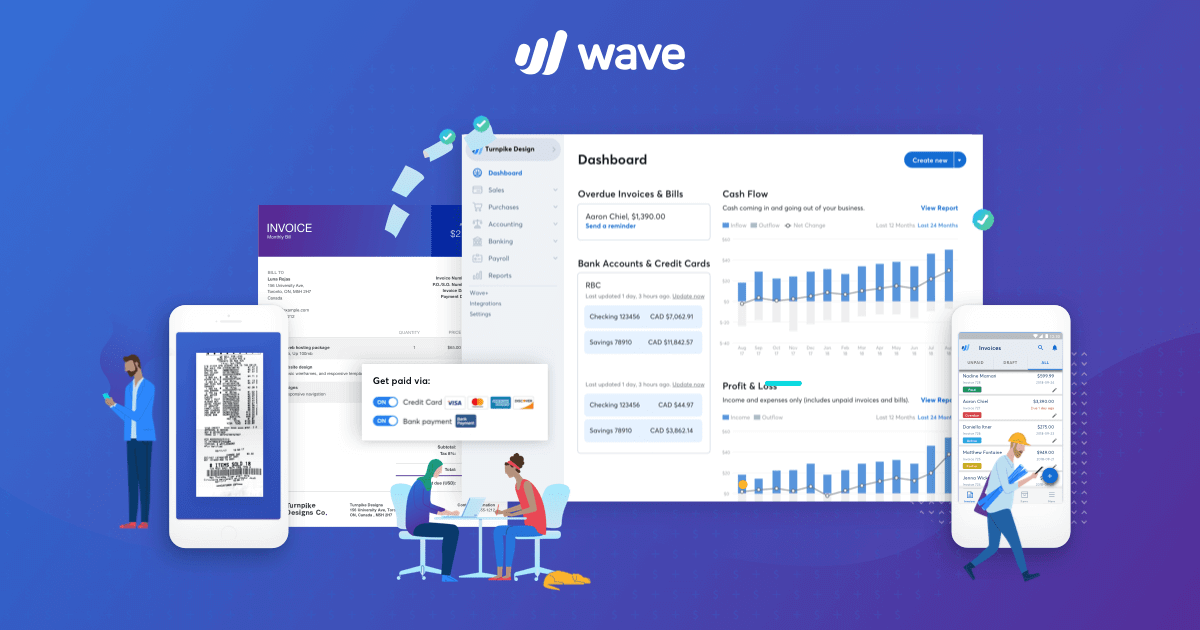
Image source: www.accountsjunction.com
Starting a business doesn’t mean you need to spend a lot on software. Many powerful, beginner-friendly tools are available for free and can help you stay organised, professional, and productive from day one.
|
Tool |
Purpose |
Why It’s Useful |
|
Google Docs & Sheets |
Document writing and budgeting |
Cloud-based, auto-saves your work, easy to share with collaborators |
|
Trello / Notion |
Task and project management |
Visual boards or all-in-one workspace to track your to-do list and business goals |
|
Wave Accounting |
Invoicing, bookkeeping, and receipts |
100% free accounting software ideal for freelancers and small businesses |
|
PayPal / Square |
Accepting payments |
Set up secure online payments or POS systems without setup fees |
|
Google Drive |
Secure file storage and sharing |
Store important business documents and access them from any device |
|
Canva (Free Plan) |
Branding, social media, and design |
Create logos, flyers, and social posts with drag-and-drop ease—no design skills needed |
These tools are free to start with, and many offer premium features as your business grows. They're widely used by entrepreneurs worldwide and trusted for reliability.
Pro Tip: Stick to just 2–3 tools initially to avoid overwhelm—choose based on your specific needs (e.g., design, finance, organisation).
Set a Budget: Start Small and Track Every Dollar

Image source: www.accountsjunction.com
You don’t need a lot of money to start your business in 2025. In fact, many businesses get off the ground with less than $500, especially if you’re offering services or selling digital products.
Typical Startup Costs Breakdown:
- Website Domain & Hosting
- Estimated Cost: $50–$100
- Use services like GoDaddy, Namecheap, or Bluehost
- Business Registration & Legal Fees
- Estimated Cost: $50–$150 (varies by state and business structure)
- Check your state’s official registration website or SBA.gov
- Marketing & Branding (Basic Ads, Flyers, Logos)
- Estimated Cost: $100–$200
- Start with free tools like Canva and use low-cost digital ads
- Software, Tools & Apps
- Estimated Cost: $0–$100
- Most offer free versions:
- Canva (design)
- Trello/Notion (project management)
- Wave (invoicing/accounting)
Recommended Free Tools for Tracking Every Dollar:
- Google Sheets – Create a basic income & expense tracker
- Wave – Free accounting software for small businesses
- Mint – Budgeting and expense categorization (good for sole proprietors)
Why Tracking Matters:
- Avoid overspending on non-essentials
- Monitor your business’s financial health
- Make smarter decisions when reinvesting profits
- Stay ready for tax time or funding opportunities
Pro Tip: Treat your business budget like a roadmap—it keeps you moving in the right direction without going off track.
Beginner-Friendly Funding Options for New Entrepreneurs
Image source: encrypted-tbn0.gstatic.com
Starting a business doesn’t always require a big bank loan or investor backing. In fact, many first-time business owners fund their ventures through small, low-risk options. Here are some of the most accessible funding sources in 2025:
|
Funding Source |
Typical Funding Range |
Why It Works |
|
Personal Savings |
$500 – $5,000 |
Great for bootstrapping small service or online businesses. |
|
Crowdfunding (e.g., Kickstarter, Indiegogo) |
$1,000 – $10,000 |
Lets you validate your idea and raise capital from supporters before launch. |
|
Microloans (via Kiva, Accion, or local CDFIs) |
$500 – $25,000 |
Ideal for those with limited credit or no collateral. |
|
Grants and Startup Contests |
Varies (up to $10,000+) |
Free money with no repayment—competitive but available. |
|
Friends and Family |
Flexible |
Often the first source of trust-based funding. |
Pro Tip: Always have a simple written agreement if borrowing from loved ones to avoid future misunderstandings.
Explore These Grant Resources:
- Grants.gov: For federal and state-level business grants
- Hello Alice: A top platform for small business grants and startup contests, especially for women, minority, and veteran-owned businesses
- SBA Local Assistance: Find support and funding options in your area
Source: Aggregated from U.S. Small Business Administration (SBA), Hello Alice, and verified CDFI program data (2025)
Start Lean: Test Before You Scale

Image source: encrypted-tbn0.gstatic.com
Before pouring time or money into a big launch, start with a small test version of your product or service. This is called a "Minimum Viable Product" (MVP), and it helps you see what works—and what doesn’t—without high risk.
Here’s how to do it:
- Offer your service to friends, family, or local connections at a discounted rate in exchange for honest feedback.
- Post in niche forums, local Facebook groups, or Reddit communities where your target audience already hangs out.
- Track responses, questions, and complaints. These are clues for what to fix, improve, or highlight.
Remember: The goal isn’t to be perfect—it’s to learn fast and adapt. Launching small helps you build confidence, prove demand, and save money while refining your offer.
"Done is better than perfect" isn’t just a quote—it’s a proven business mindset used by top entrepreneurs to get real-world validation before scaling.
Spread the Word (Without Spending a Fortune)
Image source: encrypted-tbn0.gstatic.com
You don’t need a big marketing budget to attract your first customers. Start by reaching out to your existing network and using free online tools:
- Post regularly on your social media (Instagram, Facebook, LinkedIn, TikTok) with clear visuals and simple messages about what you offer.
- Join and engage in local Facebook groups or community forums where potential customers hang out. Share helpful advice, not just promotions.
- Send personalised emails or messages to friends, family, and former colleagues letting them know about your business and asking them to spread the word.
- Create digital flyers or graphics using free tools like Canva and share them in WhatsApp groups, community boards, or on social media stories.
Tip: Don’t just ask people to buy—ask for feedback, referrals, or even a share. Early support often comes from people you already know and trust.
Don’t Fear Mistakes—They’re Part of the Journey
Every successful entrepreneur has made mistakes—sometimes big ones. But what separates success from failure is how quickly and wisely you learn from them. Mistakes are not roadblocks; they’re lessons in disguise.
Here’s how to bounce back stronger:
- Watch free YouTube tutorials
Learn practical skills like setting up a Shopify store, marketing on Instagram, or using accounting software. Channels like Foundr, Gillian Perkins, and Pat Flynn offer beginner-friendly content. - Read expert blogs
Stay up to date with trusted websites such as: - Shopify Blog – eCommerce advice
- HubSpot Blog – Marketing, CRM, and sales tips
- NerdWallet Small Business – Finance tools and startup costs
- Listen to educational podcasts
Some valuable podcasts for beginners: - StartUp by The Gimlet Network – Real stories of launching a business
- The Side Hustle Show by Nick Loper – Actionable tips for part-time entrepreneurs
- Smart Passive Income by Pat Flynn – Monetisation strategies and productivity hacks
Pro Tip: Create a weekly learning schedule. Even 20 minutes a day can grow your knowledge quickly and keep your motivation high.
The key is not to avoid mistakes—but to treat each one as feedback, not failure.
Where to Find Free Business Help in the U.S. (2025 Edition)

Image source: media.smallbiztrends.com
Starting a business doesn’t mean doing it alone. In 2025, several trusted U.S. organizations offer completely free support, guidance, and resources for new entrepreneurs—both online and in person.
1. U.S. Small Business Administration (SBA.gov)
- Offers step-by-step startup guides, business plan templates, loan information, and online learning courses.
- Hosts local and virtual workshops and webinars across all 50 states.
- Connects you to funding opportunities and disaster recovery programs.
Visit: https://www.sba.gov
2. SCORE.org
- A nonprofit network of over 10,000 volunteer business mentors.
- Provides free one-on-one mentoring, online courses, and business templates.
- Offers support in areas like marketing, operations, finance, and strategy.
Visit: https://www.score.org
3. Small Business Development Centers (SBDCs)
- Located in every state, SBDCs offer hands-on, personalized support at no cost.
- Services include business plan reviews, market research, licensing help, and funding advice.
- Many centers partner with local universities and economic development offices.
Find your local SBDC: https://americassbdc.org
4. Local Chamber of Commerce
- Connect with local business networks, events, and community-driven resources.
- Often offers small business expos, referrals, grant announcements, and workshops.
- While some services may have small fees, many networking opportunities and first-time consultations are free.
Find your Chamber: Search “Your City + Chamber of Commerce”
Bonus: Adopt a Success Mindset
Image source: encrypted-tbn0.gstatic.com
Building a business isn’t just about tools and tactics—it’s about how you think. A strong mindset can keep you going when things get tough and help you stay focused on the long-term goal. Here's how to shape a mindset for success:
Prioritise progress over perfection
You don’t need to have everything figured out. Small consistent steps are better than waiting for the “perfect” moment that never comes.
Break big goals into small, manageable wins
Big dreams can feel overwhelming. Divide them into simple weekly tasks—every completed step builds confidence.
Stay curious and commit to lifelong learning
The most successful entrepreneurs keep learning—through free courses, podcasts, books, and by listening to feedback.
Surround yourself with positive and honest people
Find mentors, join online communities, or attend local entrepreneur meetups. Encouragement and honest feedback from others can keep you grounded and growing.
Remember: A growth mindset is your most valuable startup tool. It will carry you through challenges and help you turn ideas into real, lasting success.
Estimated Startup Costs by Business Type in 2025
Image source: encrypted-tbn0.gstatic.com
Starting a business doesn’t have to cost a fortune—especially with the rise of digital platforms and free tools. Here's a more detailed breakdown of typical startup costs in 2025 by business type, based on current insights from the U.S. Small Business Administration (SBA) and industry experts:
|
Business Type |
Estimated Startup Cost (2025) |
Details |
|
Online Store |
$300 – $1,500 |
Includes domain, eCommerce platform (e.g., Shopify), branding, and inventory. |
|
Service-Based Business |
$100 – $1,000 |
Ideal for freelancers, cleaners, consultants—low overhead and flexible. |
|
Brick-and-Mortar Store |
$2,000 – $15,000+ |
Includes rent, inventory, equipment, signage, and permits. Higher setup costs. |
|
Dropshipping Business |
$200 – $800 |
No inventory needed; covers website, marketing, and supplier setup. |
|
Digital Products (eBooks, Courses) |
$50 – $500 |
One-time creation cost; nearly zero inventory or delivery expenses. |
Tip: Always start with a small budget and scale based on real demand. Use free tools before committing to paid services.
Source: U.S. Small Business Administration 2025 Estimates and industry benchmarks from Shopify, Oberlo, and SCORE.
May Help You: Before you register your business or choose a final name, it’s a smart idea to check who already owns what—especially if you're planning to operate in Texas. Conducting a quick business owner search helps you avoid trademark conflicts, duplicate names, and potential legal issues. If you're unsure how to do this, check out our How to Do a Texas Business Owner Search: Step-by-Step Guide for simple instructions using the official Texas Secretary of State website.
Conclusion
Starting a business in 2025 doesn’t require a business degree, a large investment, or years of experience—it simply requires the right information and a willingness to take action. With affordable digital tools, free resources from trusted platforms like the SBA and SCORE, and a growing support system for entrepreneurs, launching a small business has never been more accessible.
This step-by-step guide gives you a practical path to follow—from choosing the right idea to building an online presence and managing finances. Don’t wait for everything to be perfect. Start small, test your idea, learn from the process, and improve along the way.
Remember: You don’t need to have it all figured out to get started. You just need to start.
FAQs: Starting a Business in 2025
Q: Can I start a business with $100?
Yes. Many online and service-based businesses begin under $100 using free tools and sweat equity.
Q: Do I need a business license?
It depends on your state and industry. Most product-based and professional services need at least a sales tax permit.
Q: Can I start while working a job?
Absolutely. In fact, part-time business owners are the fastest-growing category in 2025.
Q: Where can I learn more for free?
Check out SBA.gov, SCORE, or your local SBDC for free guides, courses, and mentoring.
Q: How long will it take to start?
Most people can go from idea to launch in 2 to 6 weeks depending on the business type and effort.

 Selina Smith
Selina Smith 








![AutoZone Business Hours [2025]: Complete Guide to Store Times, Holidays & Tips](https://statesidemagazine.com/uploads/images/2025/06/image_140x98_6852d31a1eb7b.jpg)





